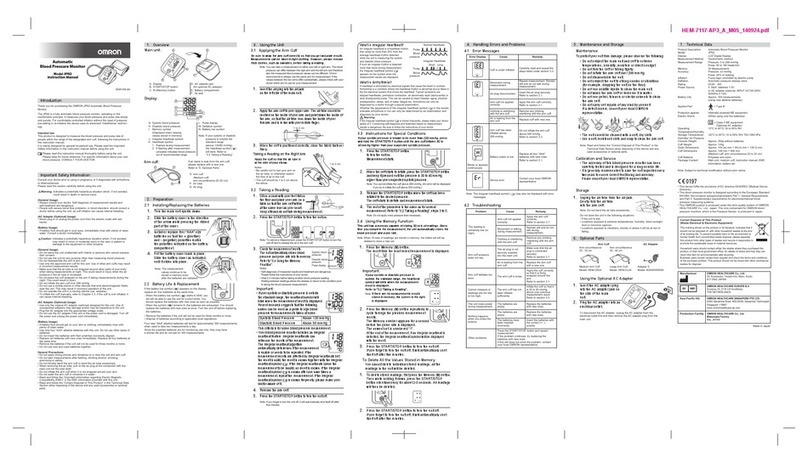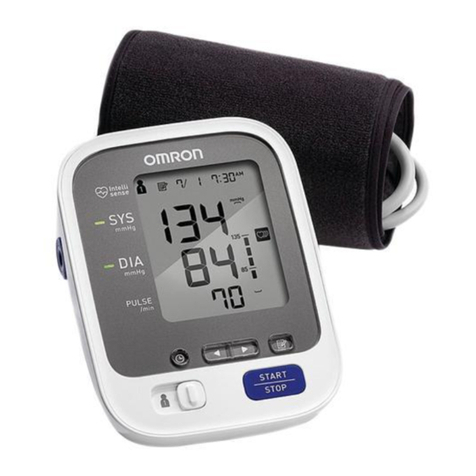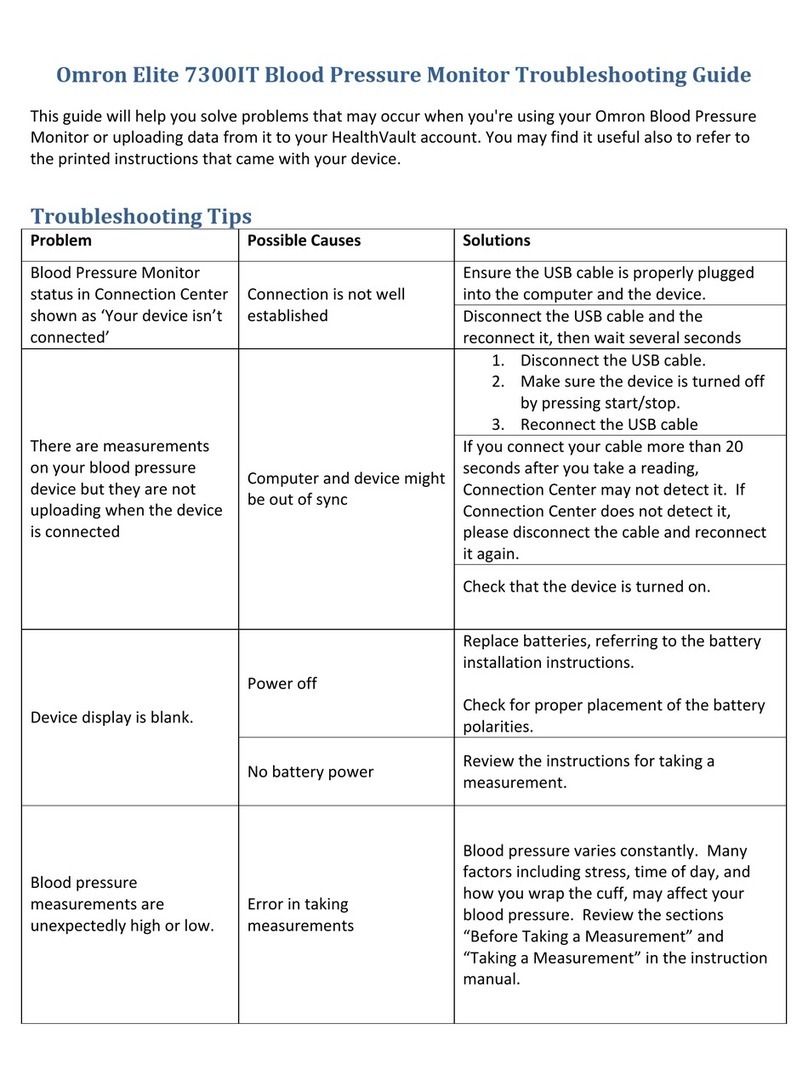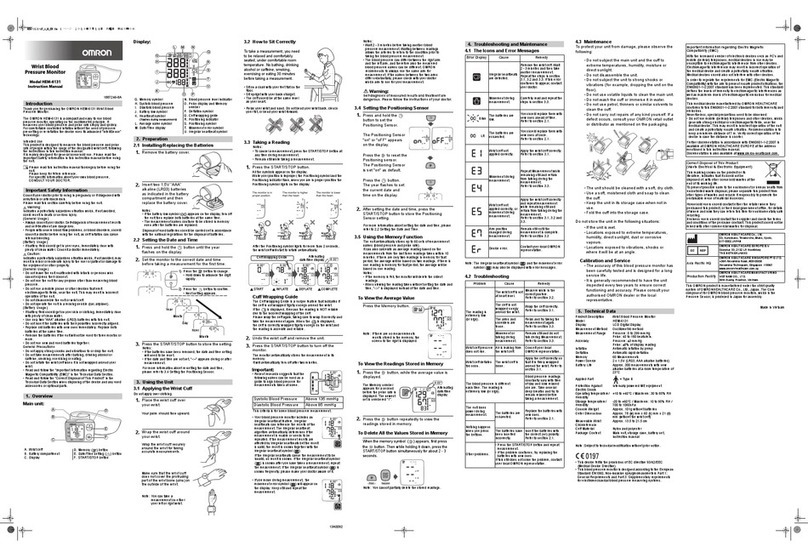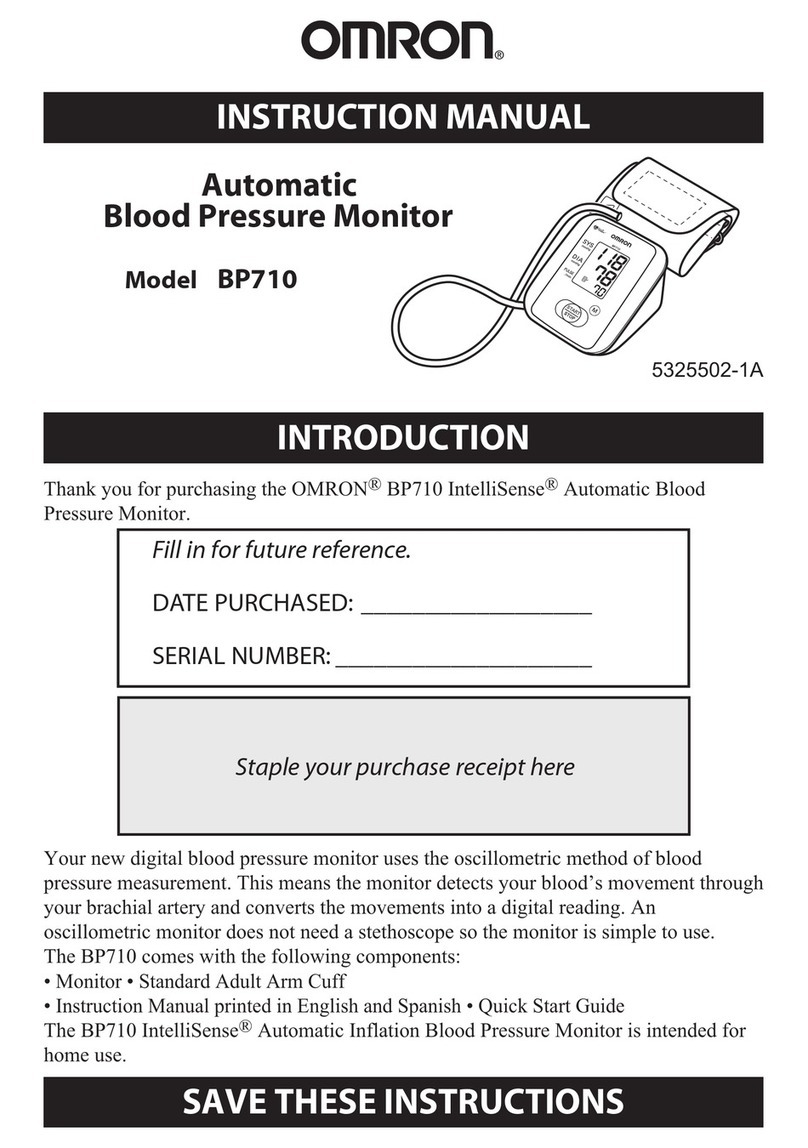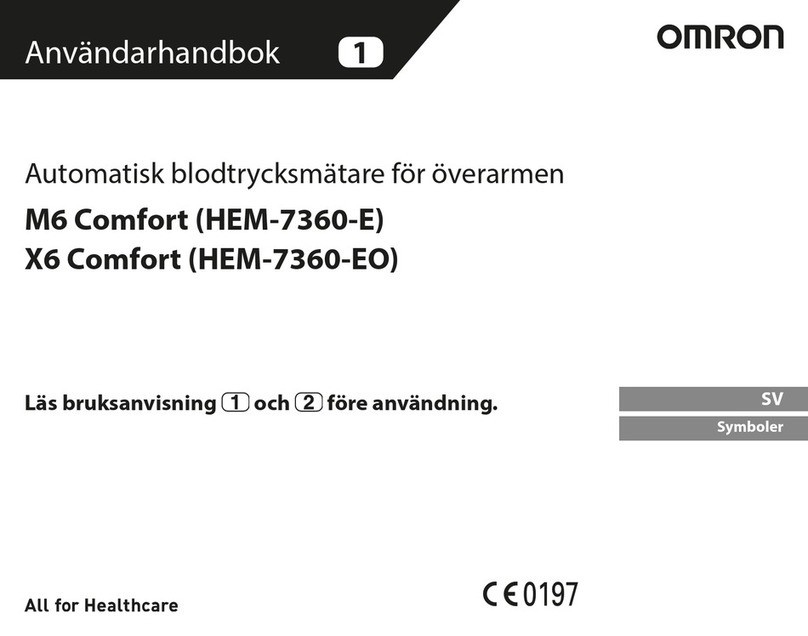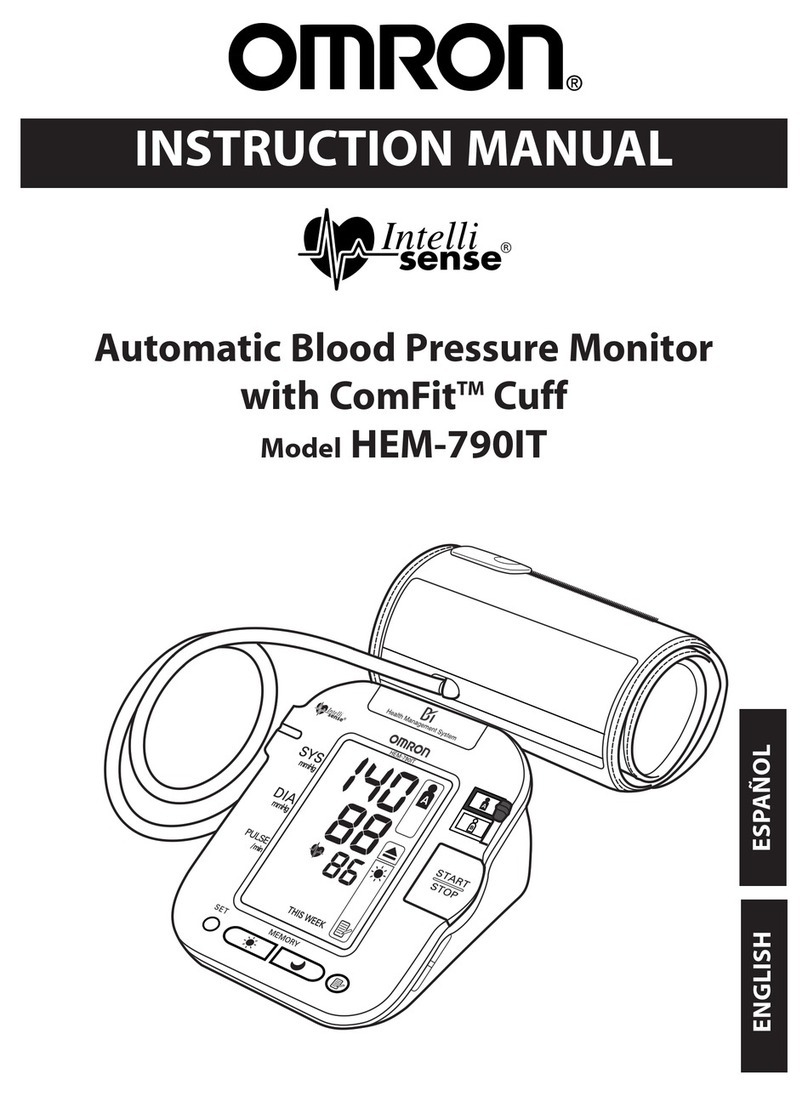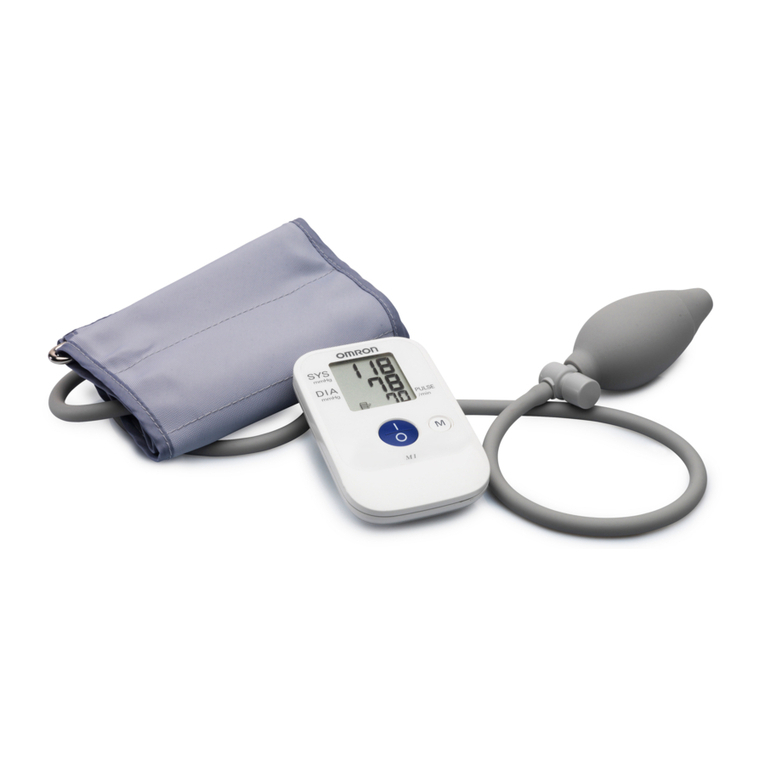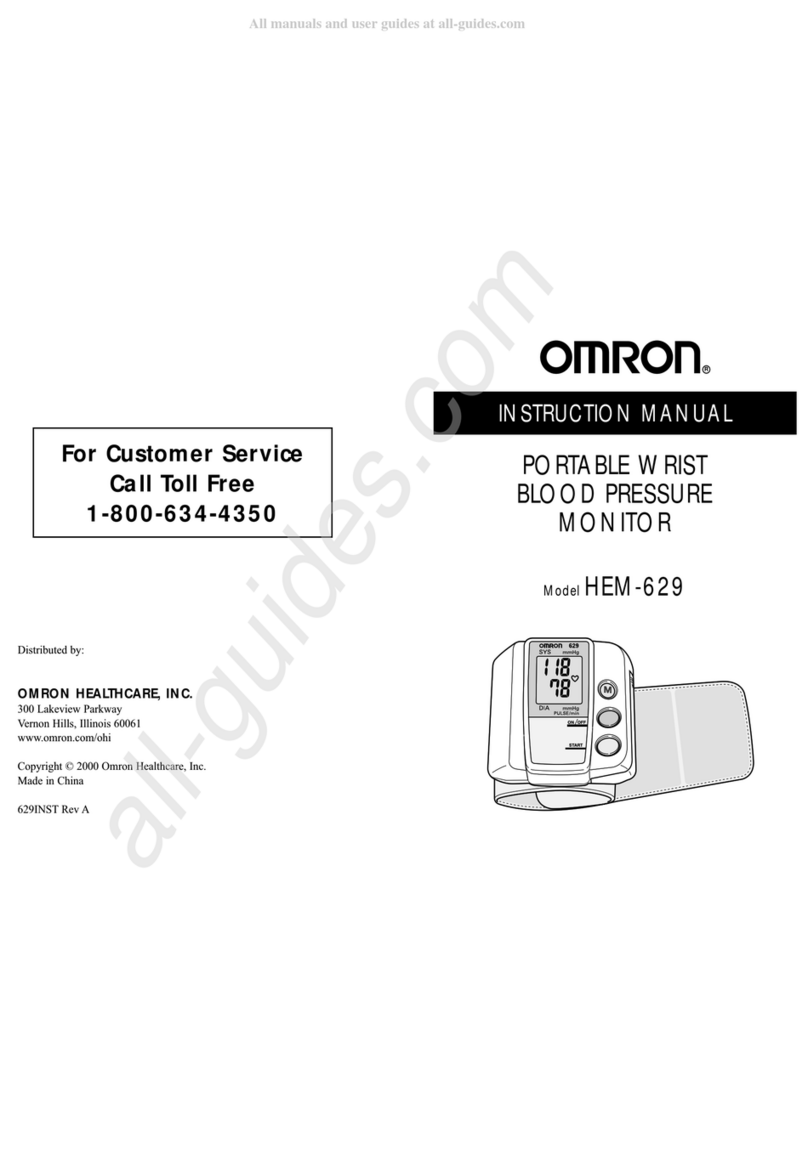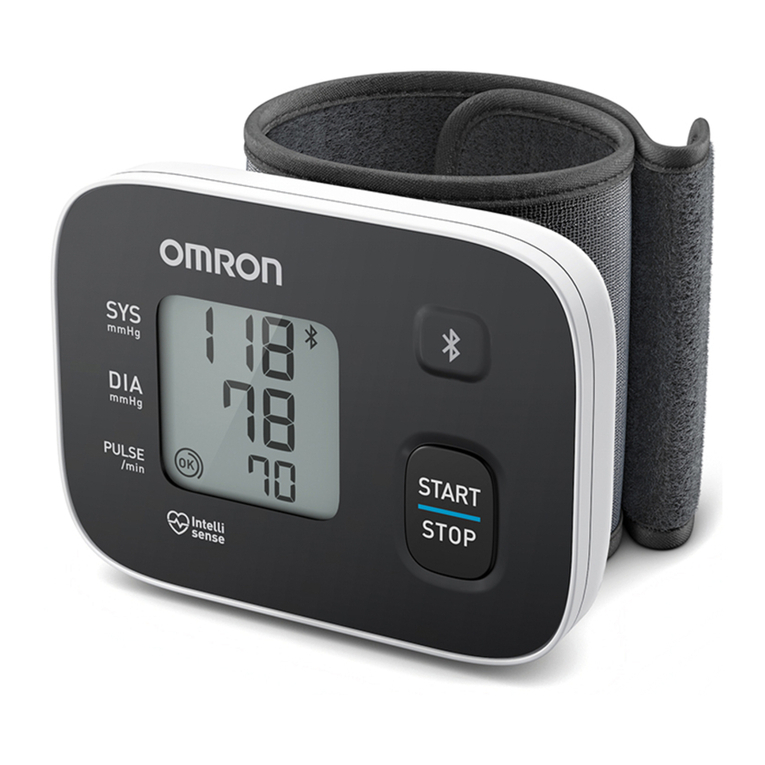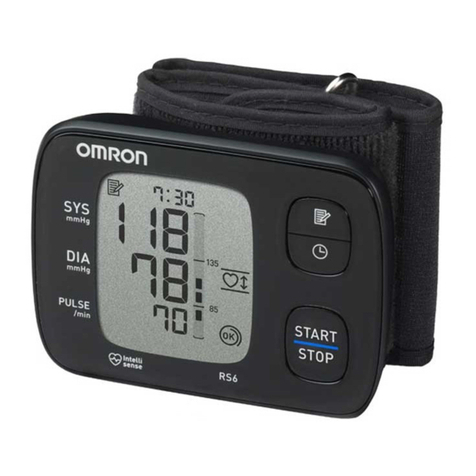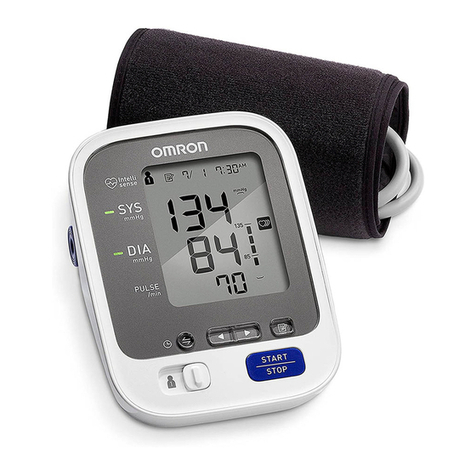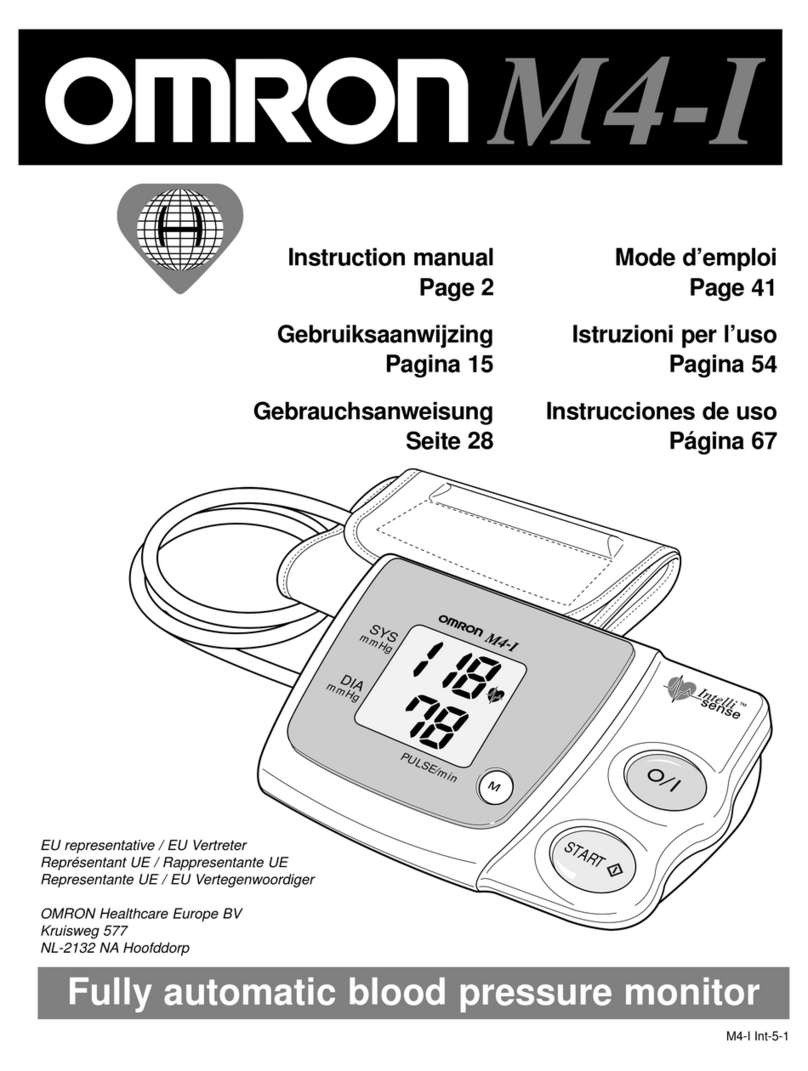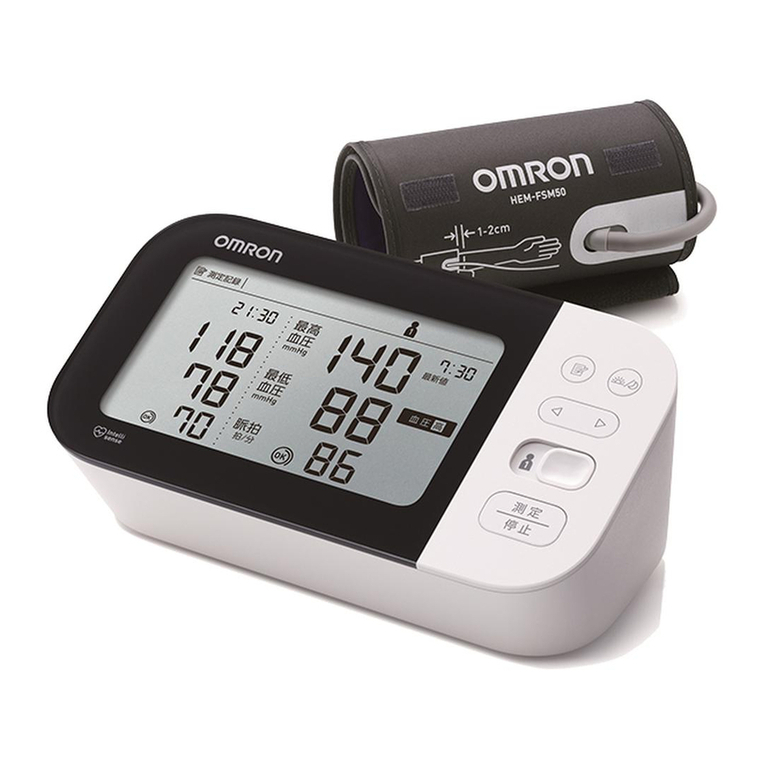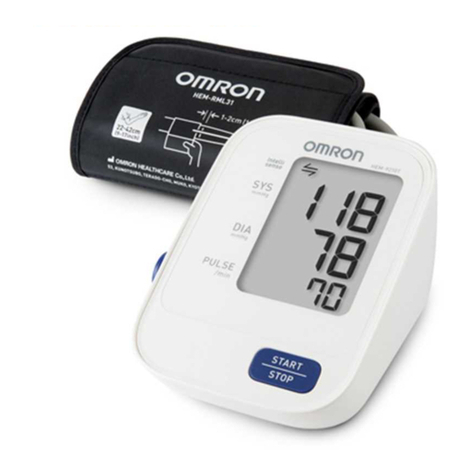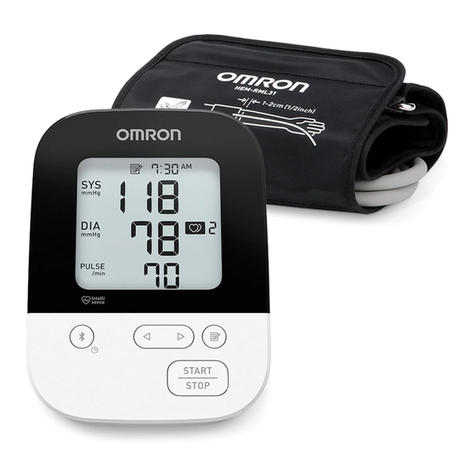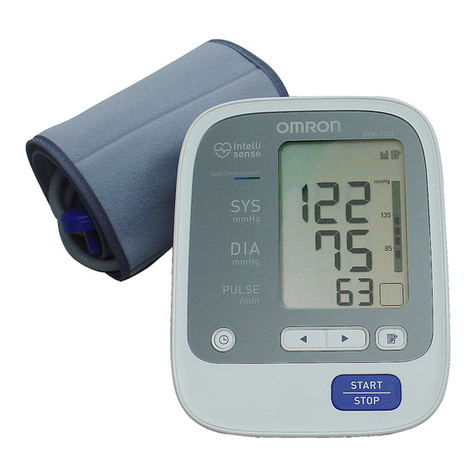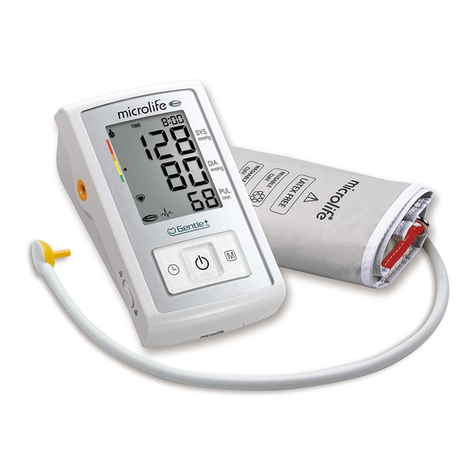
6
• DO NOT use this monitor for any purpose other than measuring blood
pressure.
• During measurement, make sure that no mobile device or any other
electrical device that emits electromagnetic fields is within 12 inches
(30 cm) of this monitor. This may result in incorrect operation of the monitor
and/or cause an inaccurate reading.
• DO NOT disassemble or attempt to repair this monitor or other components.
This may cause an inaccurate reading.
• DO NOT use in a location where there is moisture or a risk of water
splashing this monitor. This may damage this monitor.
• DO NOT use this monitor in a moving vehicle such as in a car.
• DO NOT drop or subject this monitor to strong shocks or vibrations.
• DO NOT use this monitor in places with high or low humidity or high or low
temperatures. Refer to section 10.
• During measurement, observe the arm to ensure that the monitor is not
causing prolonged impairment to blood circulation.
• DO NOT use this monitor in high-use environments such as medical clinics
or physician offices.
• DO NOT use this monitor with other medical electrical (ME) equipment
simultaneously. This may result in incorrect operation of the devices and/or
cause an inaccurate reading.
• Avoid bathing, drinking alcohol or caffeine, smoking, exercising and eating
for at least 30 minutes before taking a measurement.
• Rest for at least 5 minutes before taking a measurement.
• Remove tight-fitting or thick clothing from your arm while taking a
measurement.
• Remain still and DO NOT talk while taking a measurement.
• ONLY use the arm cuff on persons whose arm circumference is within the
specified range of the cuff.
• Ensure that this monitor has acclimated to room temperature before taking
a measurement. Taking a measurement after an extreme temperature
change could lead to an inaccurate reading. OMRON recommends waiting
for approximately 2 hours for the monitor to warm up or cool down when
the monitor is used in an environment within the temperature specified as
operating conditions after it is stored either at the maximum or at the
minimum storage temperature. For additional information on operating and
storage/transport temperature, refer to section 10.

